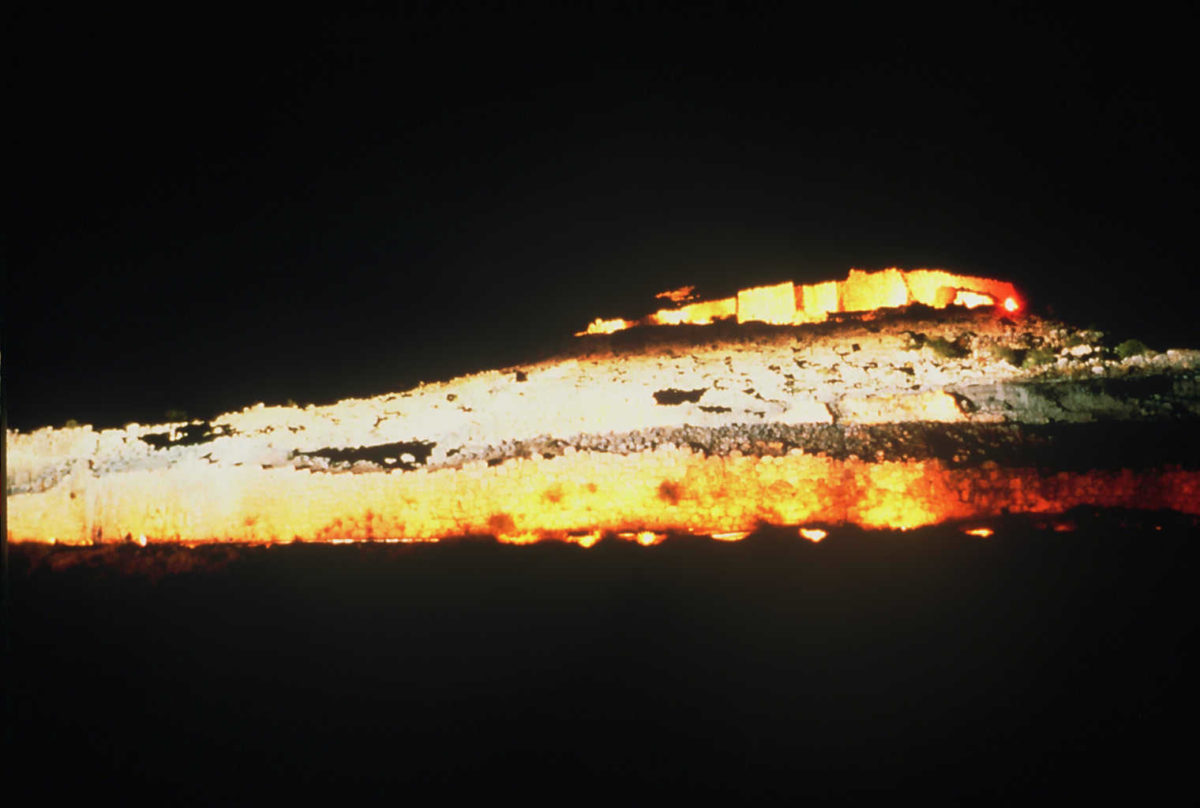Being his first work created in Greece, in this high place of the ancient culture, The Polytope of Mycenae will keep a special place in the artist’s universe. Xenakis conceived it after having obtained amnesty, thanks to Constantin Karamanlis, in 1974. It is a return to his native country, after 27 years of exile. A memory of a school trip to Mycenae at the age of 14 will inspire a light and sound show on the ancient acropolis and the surrounding mountains, Zara and Elias. This polytope will be performed from September 2 to 5, 1978. The show, which lasts 1h30, begins when night falls: the acropolis and the hills are illuminated, children and soldiers carrying torches as well as animals equipped with bells and a diode between the horns draw luminous constellations in the darkness on the sides of the mount Zara. Several vocal and instrumental works are played: Oresteïa (1965-66), A Hélène (1977), Persephassa (1969) and Psappha (1975), will resound on the Mycenaean landscape, when the orchestra-in situ- composed of several choirs and an ensemble of 14 instrumentalists and 6 percussionists accompany them. In addition, and during the four days of representations, a chorus of women recites in the phonetics of the ancient time, extracts of Helen of Euripides, the Iliad of Homer and Oedipus in Column of Sophocles. This ensemble of “Greek” pieces by Xenakis and recitations of ancient texts is interspersed with “sound interpolations”, composed of fragments of Mycènes Alpha (1978), a work composed especially for the occasion with the UPIC system. Large anti-aircraft projectors, fireworks and slide projections were added to the show, directed by Xenakis from a walkie-talkie. The 10,000 spectators who visited the land of Argolid that late summer of 1978 will remember it for a long time.
Categories
Polytope de Mycènes

